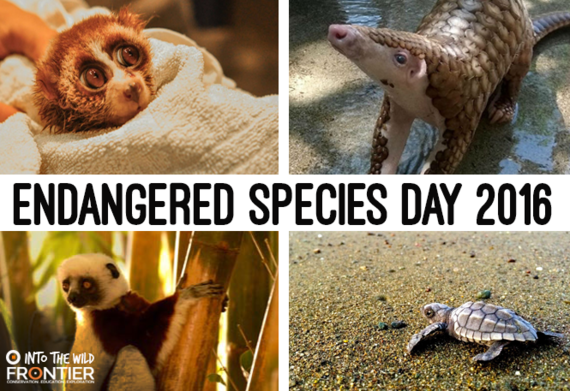
World awareness days rarely come in as big a form as Endangered Species Day. It's a moment when all the examples of how disastrous the conditions of the world all stand to be counted at once. We see pictures from across the world of animals that, without our interference, would have no place to be mentioned on such a day.
In the hope of raising awareness still further, here are 5 profiles of endangered animals that we at Frontier are striving to save.
Pangolin -
The plight of the pangolin is one of the most severe in the world. Thousands are poached every year as demand for their scales, claws and many other body parts grow exponentially. Being an unusual little animal with some wonderful natural traits, they've caught the attention of those who practice traditional medicine in South East Asia, and as a result their numbers have dropped like a stone. To give you some idea about how unfortunate their situation, here are some examples of what sort of traditional medicine they are being slaughtered in their thousands to provide.
The scales are dried, burnt to ash, cooked in oil, butter, boy's urine (!), roasted with peanuts, earth and sea shells to provide remedies to such illnesses as deafness, blindness, cancer, infertility, excessive nervousness and women who are possessed by darkness, the devil or ogres. If that sentence doesn't tell you they're killed needlessly, nothing else will convince you.
Furthermore, in many cases the pangolins are boiled alive to remove and soften their scales, or indeed have them cut away from the skin, again with the animal still alive.
Projects to protect pangolins have been set up in earnest over the past decade, including with Frontier. In Vietnam, there is the Pangolin Rescue Project, on which volunteers are hands on with caring for pangolins as well as learning about conservation efforts for the animals. The hope is that the project will raise awareness in the area, helping to prevent illegal poaching and trade.
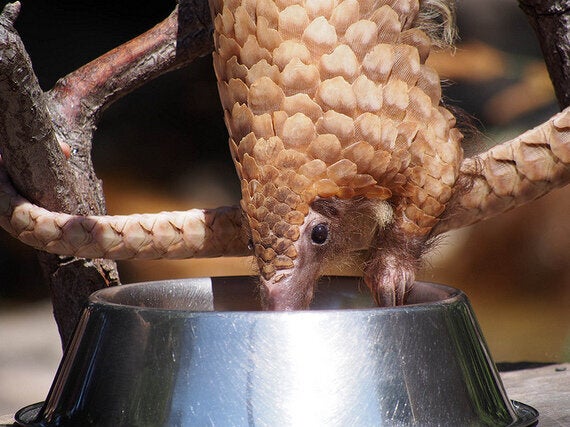
Follow this link to the Frontier Vietnam Pangolin Rescue Project.
Slow Loris -
As an achingly cute creature, Slow Loris were always destined to be targets. The biggest threats to the Slow Loris are habitat loss and being illegally traded for pets. Currently listed as endangered by the ICUN, these inhabitants of South East Asia are also in high demand on the black market for ingredients to (you guessed it) traditional medicine. An unthinkable fate for creatures that are so darn endearing! They do not make good pets though, and have been known to commit self-harm and go through periods of starving themselves if not living in a natural environment.
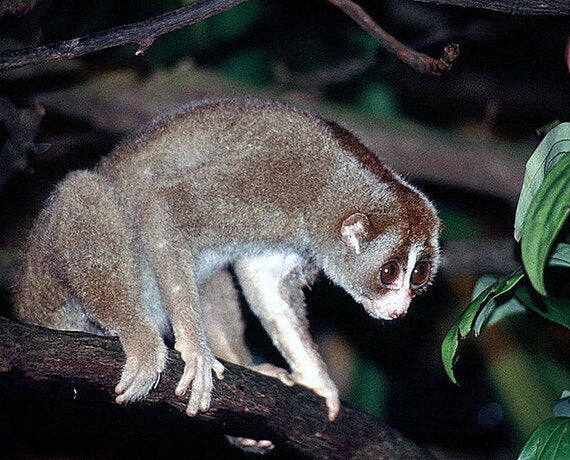
flickr | Dick Culbert
If you want to get involved in helping out the Slow Loris, and why wouldn't you, then follow the link to the Frontier Thailand Animal Rescue Project. There, you will not only help out with looking after the animals in hands on fashion, but will contribute to raising awareness and longer term conservation efforts.
Lemurs -
Lemurs are one of the many iconic animals of Madagascar, the only place on earth where you find them in the wild. The fast growth of the island nation and dwindling natural habitat of the Lemurs has put them under severe threat though. Lemurs are one of the most diverse primate species on the planet, with the highly seasonal climate and immense diversity of Madagascar itself giving rise to a wide variety of these amazing mammals.
Diminishing and destroyed habitat is the biggest threat to Lemurs today, with acres and acres of their forest home being destroyed every year. The rapidly developing country has meant that more and more natural habitat is giving over to sustaining the expanding nation and as a result the Lemurs have suffered. It's not all bad though, over the past few decades the nation has recognised the iconic Lemur as a national treasure and more and more efforts are being put in place to protect them. The animal that once was seen as food or even a pest, is now revered and protected as well as possible.
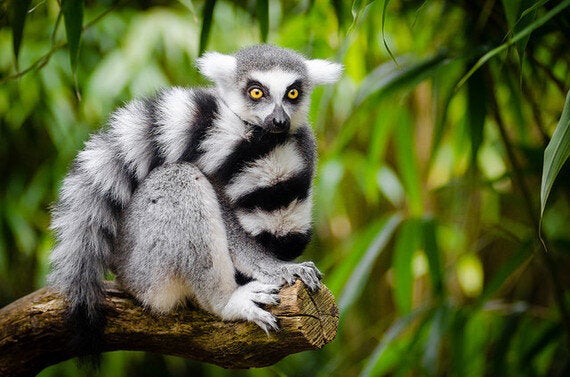
Follow the link to learn more about the Frontier Lemur Conservation Project in Madagascar.
Turtles -
Now for a marine animal. Turtles have long been a symbol of animal conservation worldwide. Many species of turtle have been endangered and fighting for their survival for years now and the end is not in sight. A whole host of things have contributed to their dwindling numbers, including diminished food sources and habitat destruction, some poaching for their shells, changing in weather conditions that have affected breeding routines, ocean pollution and laying victim to the ever increasing problem of fishing bycatch.
Both the leatherback and Kemp's ridley are at risk of extinction and rank as two of the top 25 most endangered animals on earth. As a result though, they have been targeted as one of the most desperate causes for conservation. In addition to extensive scientific research to understand migration and breeding, turtles receive an awful lot of hands on care to ensure that breeding is successful, habitats are restored or saved from destruction and injured individuals are given the right care to be able to be released back into the wild.
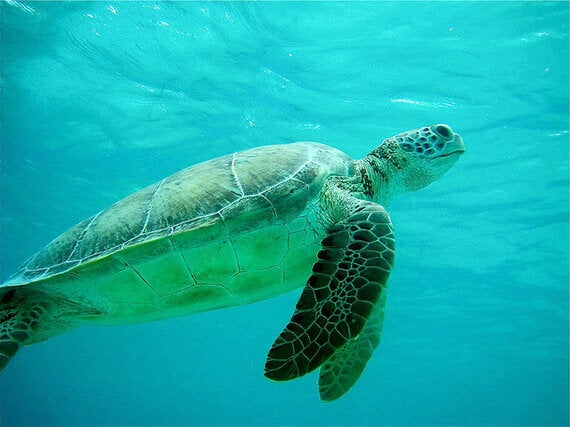
For more information on Frontier's Greece Turtle Conservation Project, follow this link.
Dolphins -
Although not widely regarded as a species in need of conservation help, Dolphins are just starting to not be taken for granted. Although their numbers are generally strong, some examples have crept up over recent decades to prove that all is not sustainable in the dolphin world. One species of dolphin is presumed to have gone extinct in the last decade and one species of porpoise is expected to become extinct within 5 years. The Baiji or Yangtze River Dolphin, was last spotted in around 2007 while the Vaquita, a native of the gulf of California is believed to have less than 50 members of its species left.
In both cases, humans are shouldering the blame. In the case of the Baiji, extensive pollution and over fishing of the Yangtzee River are to blame for its extinction. It was so bad in some areas that the industrial sludge and rubbish that was poured into the river created a man made pollution dam that the water couldn't pass. Fishing too has caused grief to the Vaquita, as this tiny porpoise happens to live one of the most heavily fished parts of America's coasts. As a result they're often the bycatch of huge trawlers that are fishing the species that the Vaquita depend on, so those that escape the net then have nothing to eat.
Efforts are in place to protect dolphins and their subspecies though. Such a widely loved animal wouldn't go unnoticed in their struggle. Many conservation projects are working tirelessly to protect dolphin habitat and change the regulations of fishing to ensure dolphins have a fairer bite of the apple.
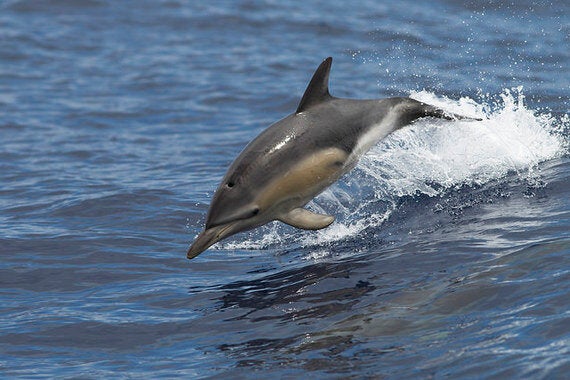
To get involved in the Frontier Tenerife Whale and Dolphin Conservation Project, follow this link.
Endangered species day is about more than just 5 animals however, there's thousands that need protecting. Hopefully by bringing attention to those that need help, we can shed light on those less known too. We've done our bit to disrupt the circle of life in the animal kingdom, so for Endangered Species day, let's create a circle of conservation where every animal has a seat.
By Guy Bezant - Online Journalism Intern
Frontier runs conservation, development, teaching and adventure travel projects in over 50 countries worldwide - so join us and explore the world!
See more from our volunteers #Frontiervolunteer
